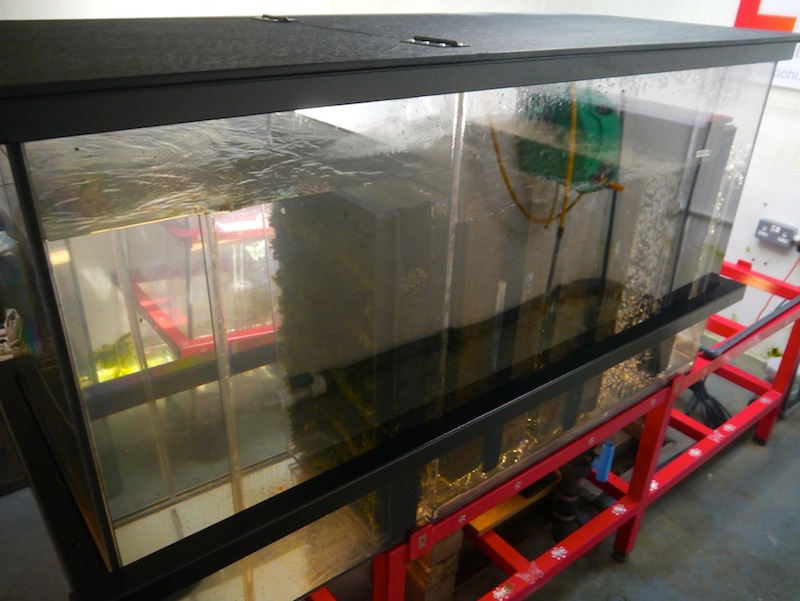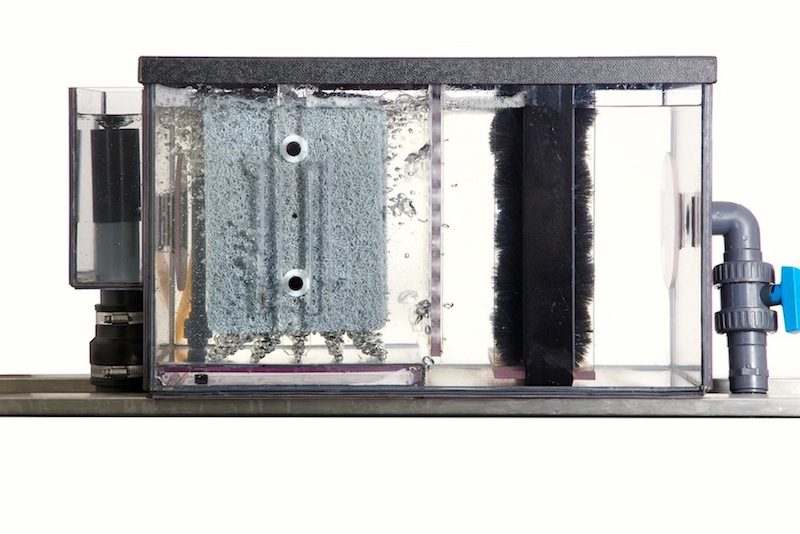Look, not wishing to labour a point…..but…..on the other hand – why not labour a point if one considers it to be of some real importance?
Despite what many out there may profess, the subject of pond water filtration in the overall hobby known as ‘Koi-keeping’ is BY FAR the most important subject of them all.
Yes, we can go out and buy some of the most desirable Koi in the world, but if they are placed in badly filtered water, they will simply deteriorate.
We can control water temperatures to perfection, but if they are placed in badly filtered water, they will simply deteriorate.
We can feed these desirable Koi with the most expensive foods known to man, but if they are placed in badly filtered water, they will simply deteriorate.
The big problem with us, and the subject of Koi pond filtration, is that we ‘assume’ far too much and we also ‘believe’ far too much that’s told to us by others either by word of mouth or by way of advertisements.
Many years ago, I stopped assuming, after finally realising that assumption is simply that – and that believing things told to me by others were simply other’s opinions.
Nowadays these two words have been binned from my Koi filtration vocabulary, because I insist on seeing 100% proof with my own two eyes.
In general terms, pond filters consist of outer boxes that hold water; they come in various sizes, shapes and colours and contain various contents that are ‘said’ to keep the pond water both ‘mechanically’ clear and also ‘biologically’ sound.
The mechanical part is a strainer/catcher/trapper/collector that is said to stop visible particles from passing back into the pond and by doing this correctly, the pond water will remain to be kept clear.
Most Koi keepers evaluate a ‘filter’ on how clear and clean the water looks to their eyes and the eyes of visitors and I agree with this wholeheartedly.
However, ALL mechanical filters – car air filters, oil filters, air conditioning filters, vacuum cleaner filters, washing machine filters and all the others we can think of, require either periodic cleaning or total replacement in order to return them to maximum performance as they were when new.
This equally applies to Koi pond filters.
With this in mind, I believe we have two options –
1. Replace the mechanical stage when it becomes blocked or ceases to maintain clear water.
2. Clean the mechanical stage thoroughly when required and re-use it as before.
In a Koi pond situation, option 1 can prove to be both labour-intensive and costly, periodic cleaning seems to be the best option.
Most pond filters sold today have some kind of ‘aid’ to make the cleaning process easier. Some use drains at the base of the boxes, some use backwash valves and others use standpipes. When operated, all these aids show filthy water being discharged to waste until the water is clear again and that’s a signal (to many) that the filter is now cleaned.
The only way to convince me that any filter is clean is to have the outer box manufactured with a see-through material, something like this –


I have been using filters made from clear PVCu for some time now and can tell in an instant if there are things inside them that should not be there and need to be taken out.
Ever wondered why no pond filters have yet been made with a clear outer box?
Here is a real-life example where a very enthusiastic Koi keeper had been using a prime vortex unit and a standard multi-bay filter on his Koi pond for some time. The vortex and each chamber of the multi-bay had discharge valves at the bases of the chambers and the owner discharged these regularly in the belief that the waste matter was being removed.


Here is a shot of the biological media supplied with the multi-bay after removal –

And these next four shots shows what was found below the biological media –



Bead filters also suffer with similar problems –


Can you imagine what you’d have seen and how you would have reacted if these filters had been manufactured with clear outer boxes – and then realised just how long it would take to clean all the media and replace it?
I hasten to point out that these two examples are not even nearly isolated instances, this has been going on for years and will continue to do so.
As mentioned earlier, my filters can be made to order in clear PVCu, admittedly they will cost a little more and are heavier that the standard polypropylene units –

But bearing in mind that the brush box and cartridge blocks can be removed in seconds to show a clean box below, why bother?

Waddy.

